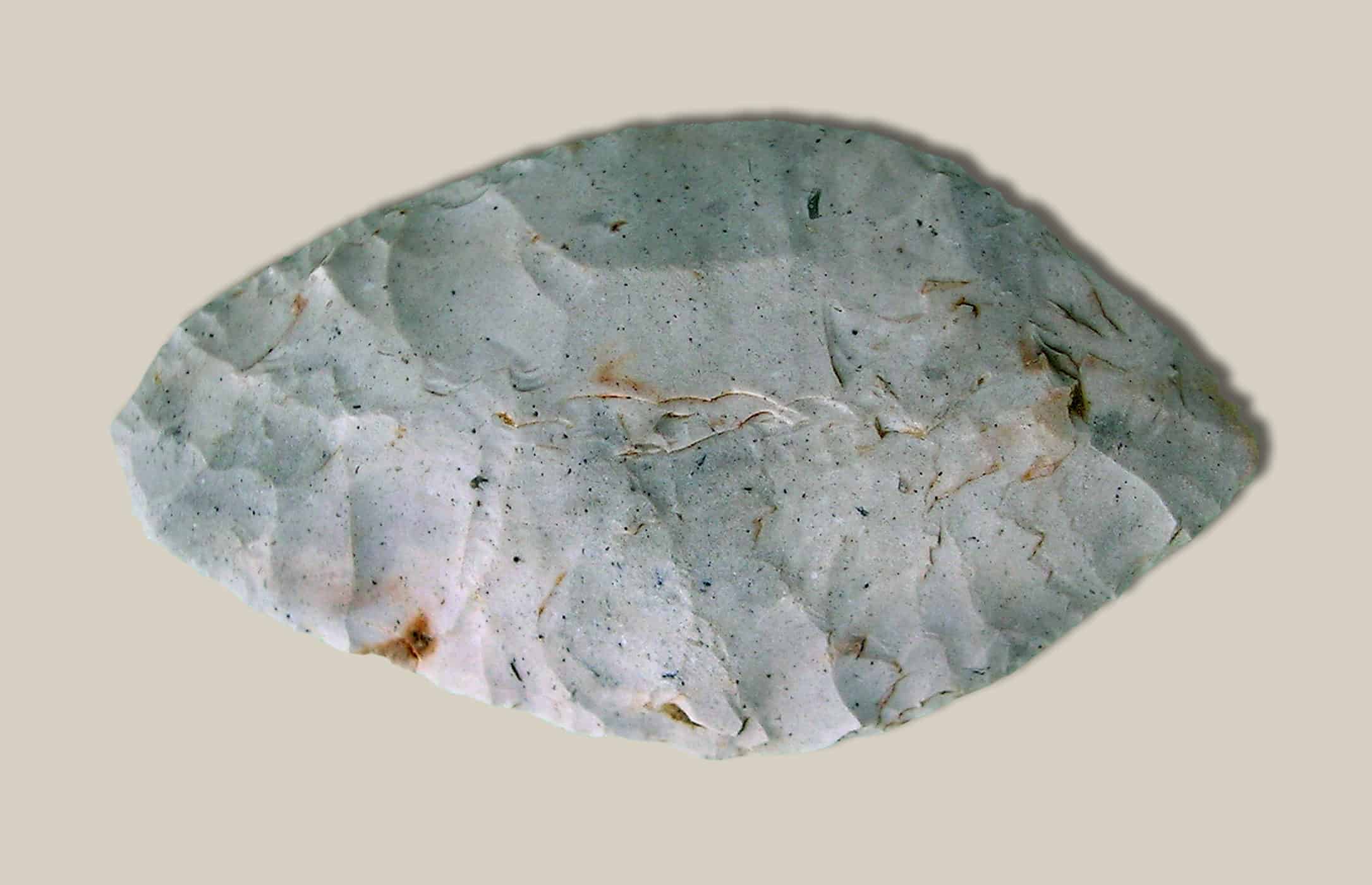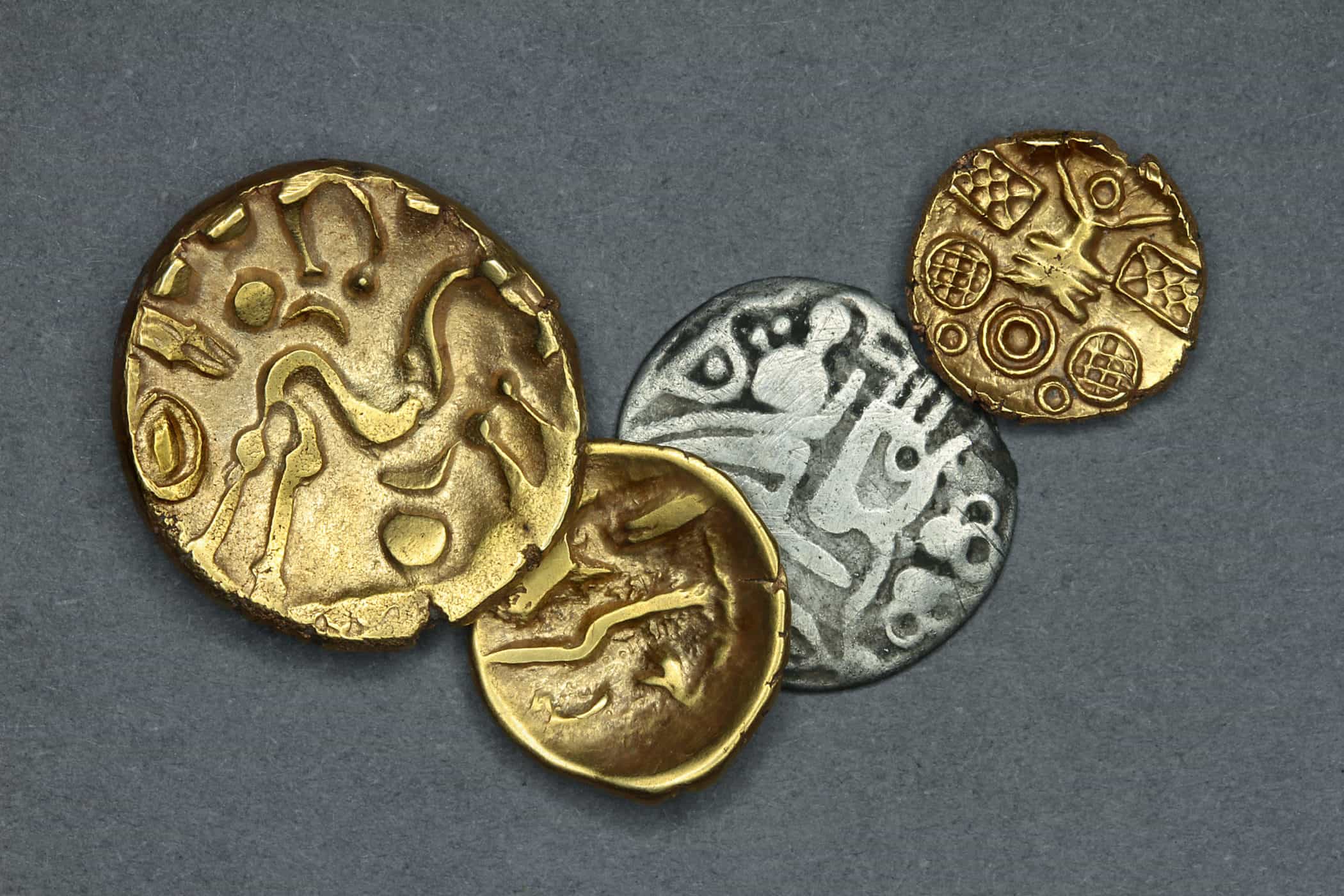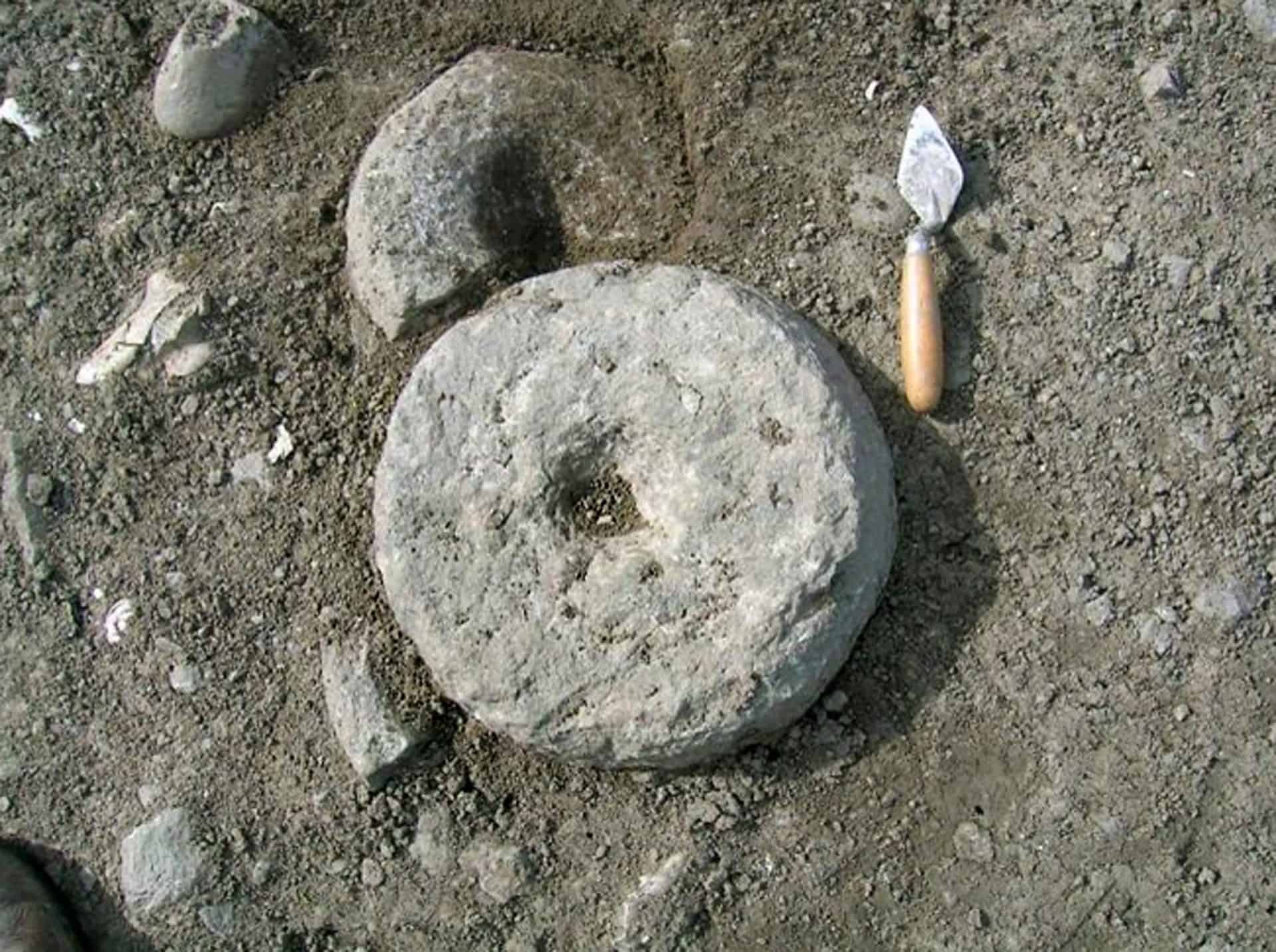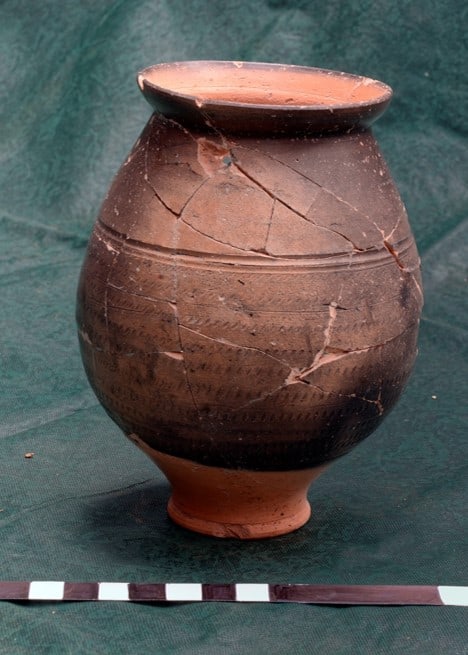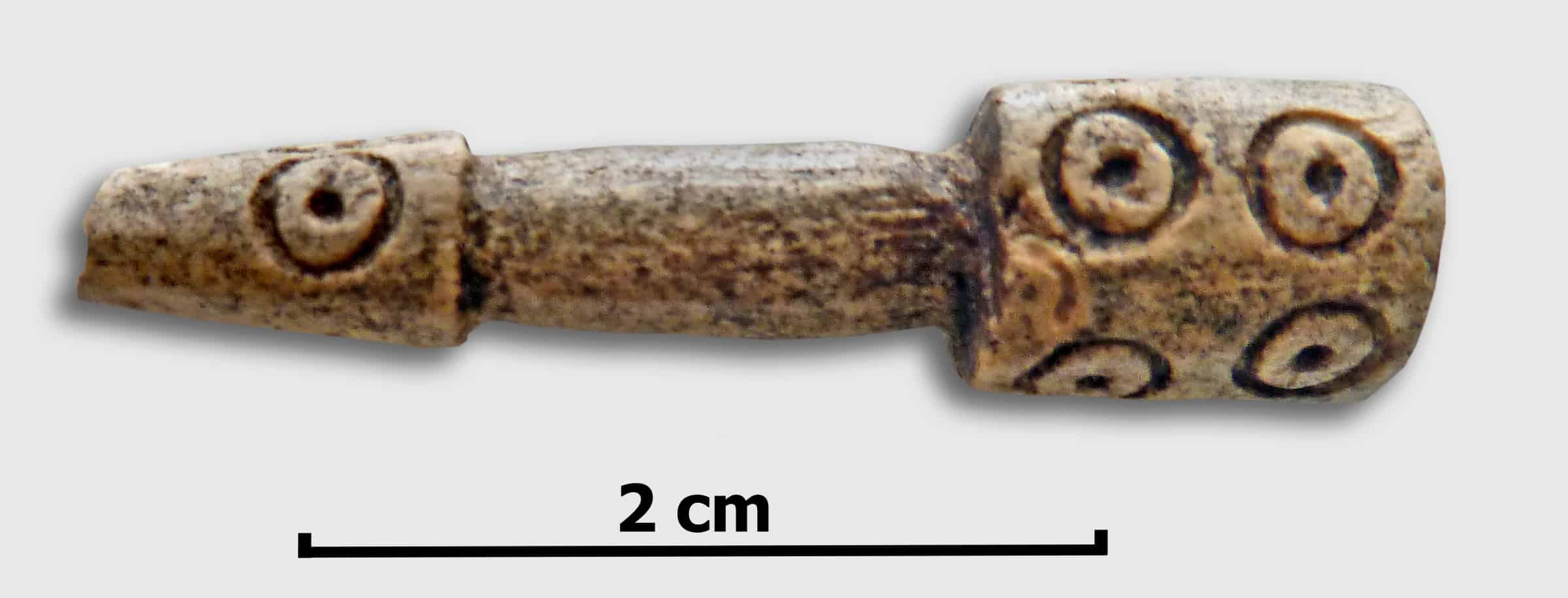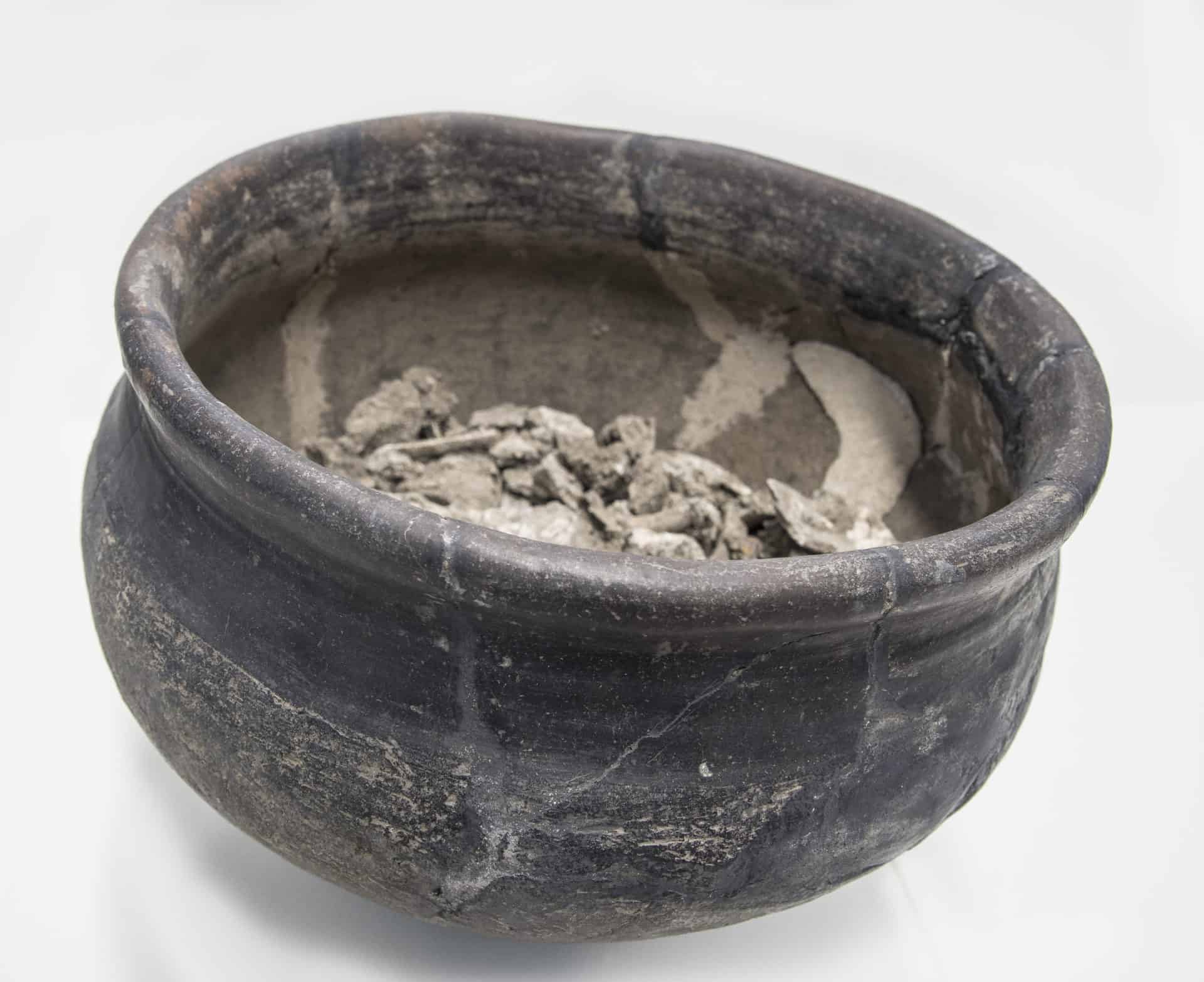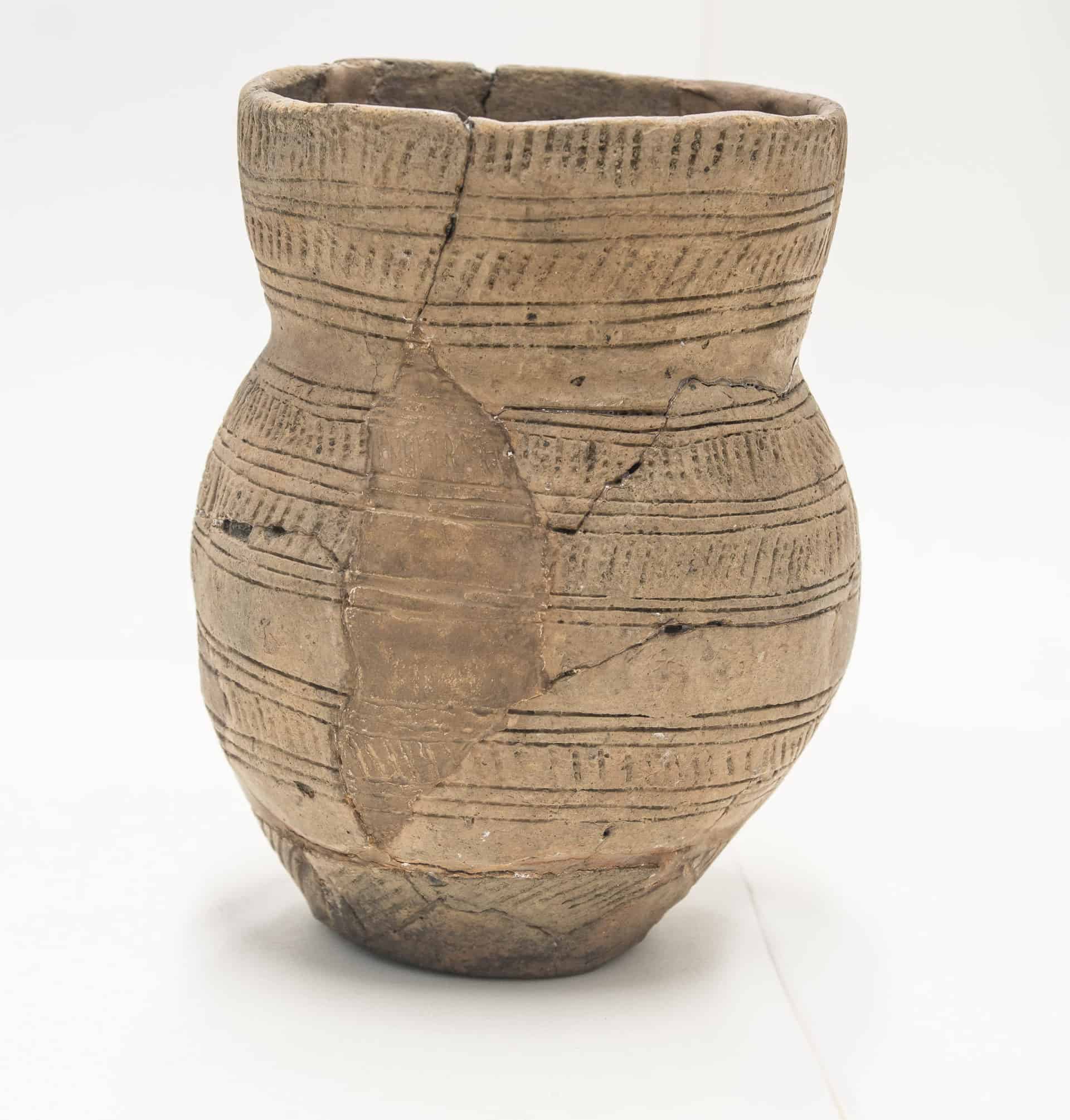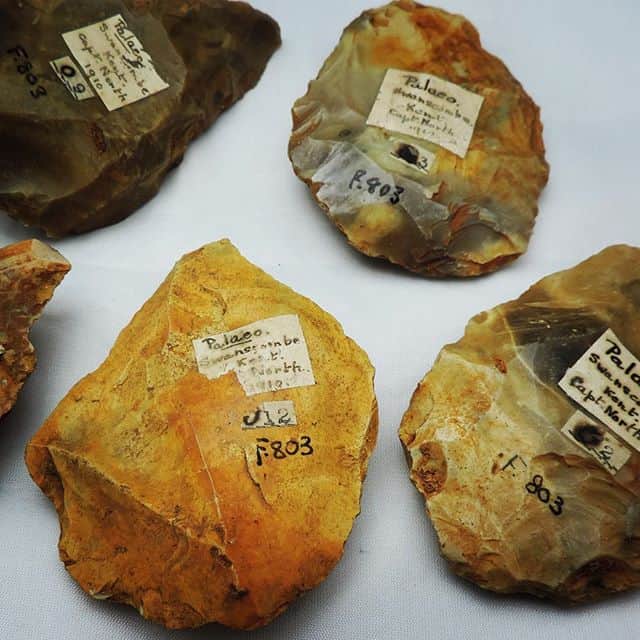Neolithic flint arrowhead up to 5000 years old. Neolithic people were the first farmers and settled in the Folkestone area where they grew crops and kept animals. It was found on Folkestone’s East Cliff.
Object: Stone Age to Iron Age
Iron Age Belgic coins
Iron Age coins used by people living in the Folkestone area over 2000 years ago, just before the Romans invaded Britain. They are called Belgic staters.
Quern stone for grinding grain
Hundreds of complete and broken rotary quern stones like this have been excavated at Folkestone’s East Cliff. Rotary querns were used in the Iron Age for grinding grain to make flour for bread. They were made from the local Greensand stone. There is strong evidence that quern stones were being made and traded from here.
Terra Rubra beaker
Terra Rubra beaker from Northern Gaul. Terra Rubra pottery is a fine red-slipped ware. It was imported to Britain in the late 1st century BC and 1st century AD.
Iron Age crematin urn
Iron Age crematin urn containing fragments of partially cremated human bone. Found on the site of Folkestone Roman Villa in 1924. As well as fragments of human bone it contained a silver armlet and bronze brooch.
Bronze Age beaker
Bronze Age beaker. These were used as drinking vessels and for storing food. They were decorated by scratching lines and pricking dots into the damp clay using a sharp stick or small bronze knife.
Palaeolithic hand axes
These prehistoric hand axes were found at Swanscombe in North Kent by Captain North in 1910. Chipped from flint, they were used by early humans in the Palaeolithic (or Old Stone Age) between 400,000 and 300,000 years ago. Hand axes were used to butcher animals, dig for edible roots, chop wood, remove tree bark and throw at prey. They are called hand axes, because they were held in the hand during chopping. Swanscombe is famous as a place where fossils of very early humans have been found.

